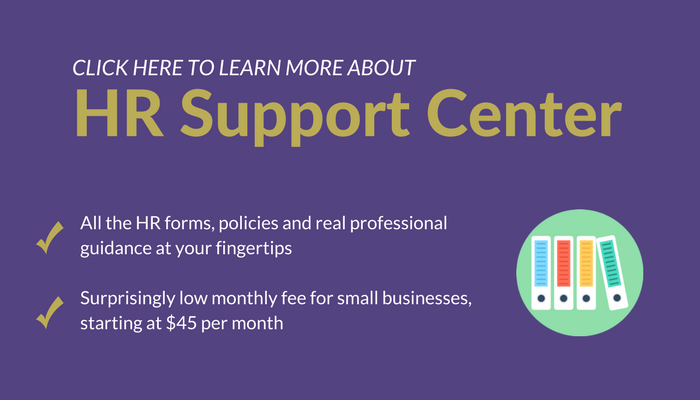
Attendance problems - not a situation a manager wants to face, but a situation a manager can handle quickly and successfully.
Many employers immediately turn to disciplinary or discharge measures for employees with attendance problems. While often a valid response, employers also need to realize the ramifications of certain employment laws. If an attendance problem is handled poorly and a termination results, an employee could bring a successful claim of wrongful termination, given the protections provided in particular laws such as:
- Americans with Disabilities Act (ADA): Under ADA, employers cannot discriminate against an employee because of a disability. In fact, the employer has a duty to reasonably accommodate an employee’s disability. While the duty to accommodate does not relieve an employee from meeting “the same performance and conduct standards” as other similarly positioned employees (without disabilities), “adjustments to various existing policies may be necessary to provide reasonable accommodation.”
- Family and Medical Leave Act (FMLA): Under FMLA, employees are entitled to be absent from work for FMLA reasons as long as they follow proper notification procedures. If an employee has followed proper procedures and is absent for an FMLA reason, the employer cannot discipline the employee for being absent from work, even if the employer does not believe the reason for absence is justified or has a no-fault attendance policy.
- Worker's Compensation Disability Act: While unlawful for an employer to discriminate against an employee because the employee has filed a complaint or exercised rights under a state Worker’s Compensation disability act, it may or may not be unlawful to terminate an employee because of absences resulting from a work-related illness or injury.
Key strategies for addressing them
These laws and their implications for disciplinary action are important to keep in mind. In addition, employers may consider a number of key strategies to effectively address employee attendance concerns:
- Management Style: Management styles that are too authoritarian tend to promote higher levels of absenteeism among employees. By identifying overtly authoritarian managers and providing them with management training, you will be taking a positive step toward reducing absenteeism as well as reducing turnover, job burnout, and potential employee health problems.
- Working Conditions: Beyond the physical workplace environment, stress in relationships among coworkers can lead to attendance problems. Companies cannot afford employees calling in sick when the problem is simply not wanting to deal with "so and so" at work. By adopting policies to promote respect and professionalism, and by adhering to internal conflict resolution procedures, businesses can reduce employee stress.
- Incentive Programs: Providing incentives can be used to motivate employees to avoid unnecessary absenteeism. For instance, some companies allow employees to cash-in unused sick days at the end of every calendar year. Others provide employees with bonus pay for perfect attendance (e.g. the equivalent of five work hours for every quarter) or acknowledge employees with certificates of achievement (and even thank-you gifts) presented by the President at a special recognition lunch. When developing an incentive program for your company, invite and encourage employees to help develop the program. While the management team may think that a $50 McDonald’s gift certificate will be a strong motivator, your employees may have much different preferences. For example, your employees may much prefer the opportunity to leave two hours early on Friday if they have perfect attendance in the previous payroll period. By inviting employees’ early input, you will be able to tailor your incentives to maximize their impact on employee behavior.
- Attendance Policy: Every company should have an attendance policy which allows a manager to intervene with an employee who is frequently absent. If you address an employee about his or her frequent absenteeism, and he or she informs you that the problem stems from personal issues, consider referring the employee to an Employee Assistance Program (EAP). Moreover, ensure that you periodically review your Employee Handbook’s attendance policy to make sure it remains aligned with current business operations and in compliance with state or federal employment laws.
Remember: If the employee's absenteeism relates to a medical problem or a family member with a medical problem, you may need to consider informing and offering the employee the provisions allowed to him or her under the Americans with Disability Act (ADA) and / or the Family and Medical Leave Act (FMLA). Early indications of and responses to such employee situations can help prevent any further absence from work and expedite an employee’s return to work.
Incorporating these strategies can help resolve costly and annoying attendance issues as well as help improve employee morale, retention, and overall health.





















